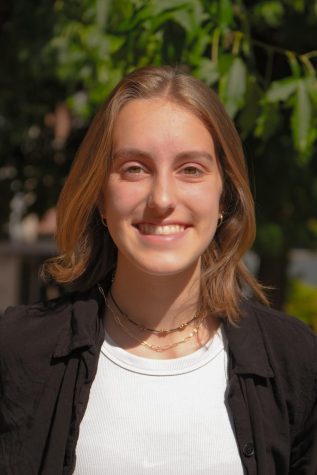IBW teachers are bargaining, but what does that mean?
February 10, 2023
Buttons reading “Ask me about what we’re fighting for! PAT Bargaining Today” have popped up in classrooms and teachers can be seen wearing bright blue PAT shirts across Ida B. Wells. But, few IBW students have asked the teachers themselves, so what does PAT bargaining really mean?
On January 30, 2023, a proposal by the Portland Association of Teachers (PAT) was made to Portland Public Schools administrators. The bargaining brief called for capped class sizes, expanded mental health services, healthier schools, and more planning time. All of these requests are in response to common issues faced by teachers in this post-Covid era.
“There have been a long line of problems that have been plaguing our profession in our schools that we have seen compounding on themselves over the years that our proposal back in 2020 was meant to begin to address,” Steve Lancaster, PAT Chair and Lincoln High School teacher said in the opening statement of the January 30th meeting. “What you can see in our proposal today is a reflection of the needs of our students, the reflection of the needs of our community, and a reflection of the needs of the professional educators who work in the community,” he said.
The speech continued with Lancaster warning of declines in students choosing teaching professions and parents choosing to send their children to public schools. And Lancaster certainly isn’t wrong—according to the National Education Association, the number of college students studying to become teachers is less than 50% of what it was 50 years ago.
As such, this desire for improved conditions is being felt across the country—including here at Ida B. Wells.
Joy Root, English teacher and PAT building representative for IBW, felt that the bargaining brief accurately summarized solutions to the struggles she faces while teaching.
“I have [had issues with class sizes]. As soon as you start going above 30 [students], it starts to feel exponentially more difficult. As an English teacher, that’s a huge workload,” she said. “Having capped classes enables us to have more time to give students feedback.”
While thresholds are already in place for class sizes, the PAT is proposing hard caps which are “a maximum number over which educators may not be assigned in terms of their class size or caseload.” Lancaster goes on to say that the PAT understands that classes may become larger than their target size, and with that extra work should come additional compensation.
Proper building conditions are another hot-ticket item on the bargaining sheet, and one especially applicable to schools with old buildings such as IBW.
“We had 20 days in the classroom at the beginning of this school year that were 85 [degrees] or above to being 100+. It makes it impossible to do what you want to do,” Root said.
In a video overview of the proposals, PAT president Angela Bonilla explained the specifics of the request, asking for classroom temperatures to be above 60 and below 90 degrees and to have buildings “free of mice and mold.”
Additionally, the PAT is advocating for appropriate mental health services. They’re requesting “space to do confidential work” and “on-site mental health and trauma-informed training for a minimum of 6 hours per school year.”
On January 31, 2023, Portland Public Schools (PPS) offered proposed changes to the PAT’s collective bargaining agreement. In the bargaining brief, the PAT explained that “Although their [PPS’s] team was not ready to present any specific economic proposals, there was plenty of handwringing over inadequate state education funding and how that will impact bargaining. “
PPS also proposed extending school years on a school-to-school basis among other suggestions the PAT was unsure about.
However, the negotiations don’t stop here. On February 14th, PPS and the PAT will hold their next bargaining meeting to continue discussing “smaller class sizes and hard caps, increased planning time, expanded mental health supports, additional special education services, racial equity and restorative justice.”
Although the PAT is a teachers association, community members can still help fight for the causes PPS teachers believe in by following the PAT on Facebook, Instagram and Twitter, commenting at future PPS Budget and Funding hearings, and contacting local legislators to advocate for funding Oregon’s Quality Education Model.
“We need to do better—all of us—and the system needs to serve all of us better,” Lancaster said.
View the full January 30th PAT bargaining session here.



